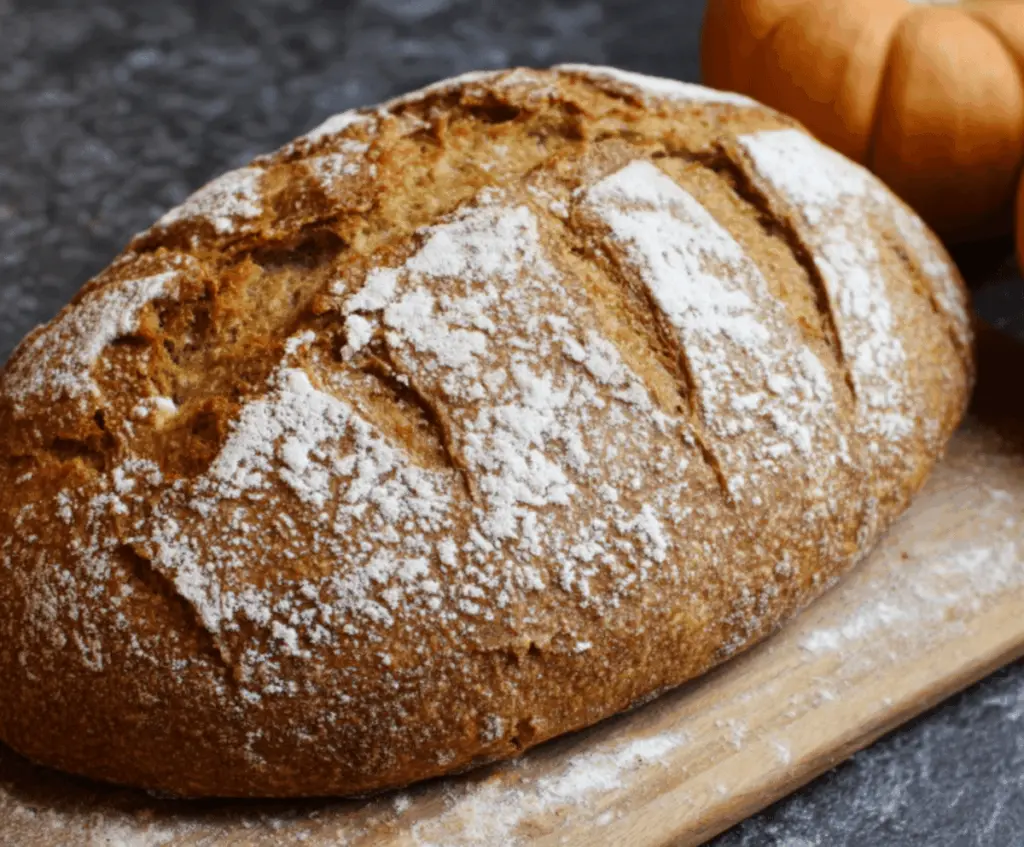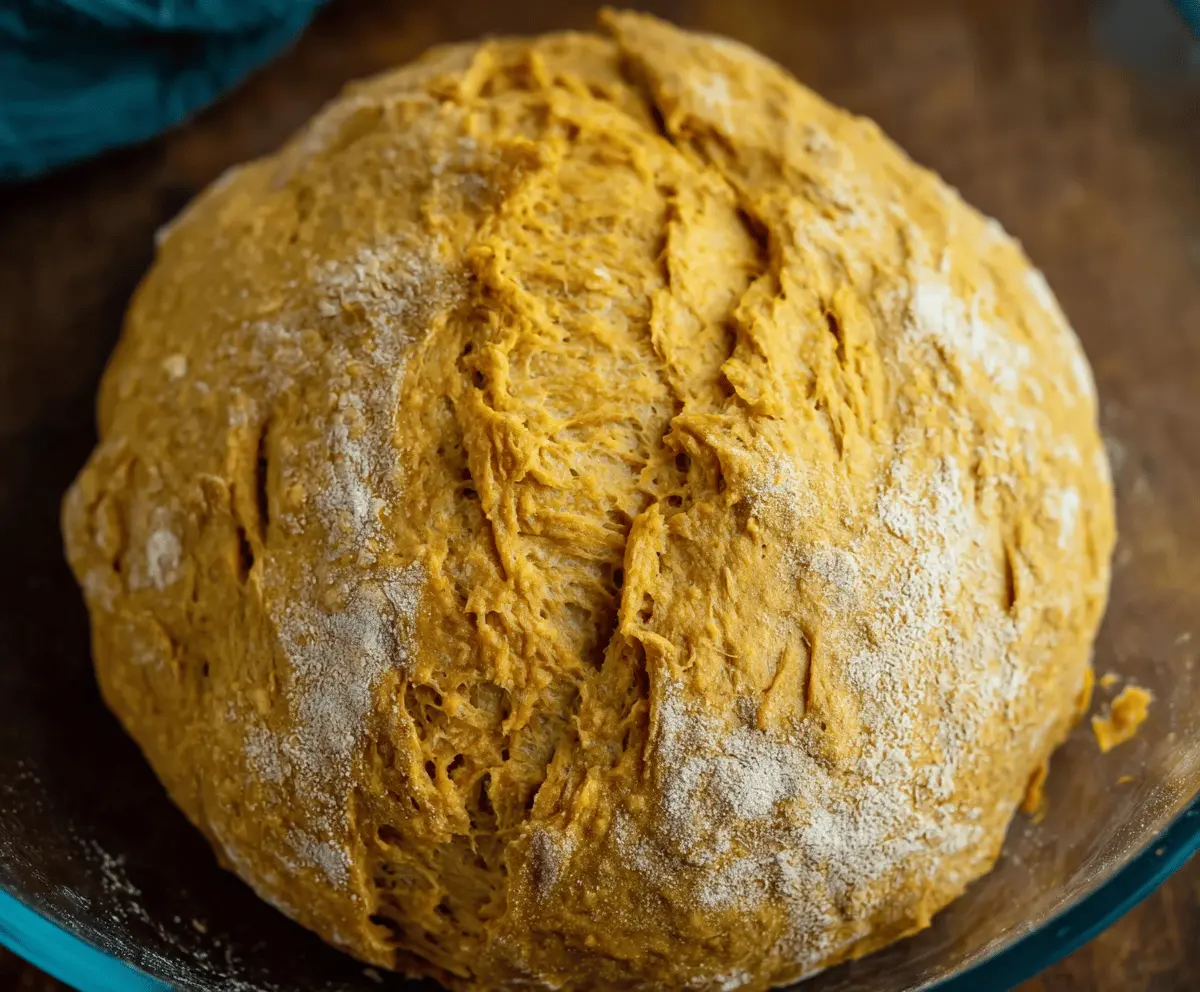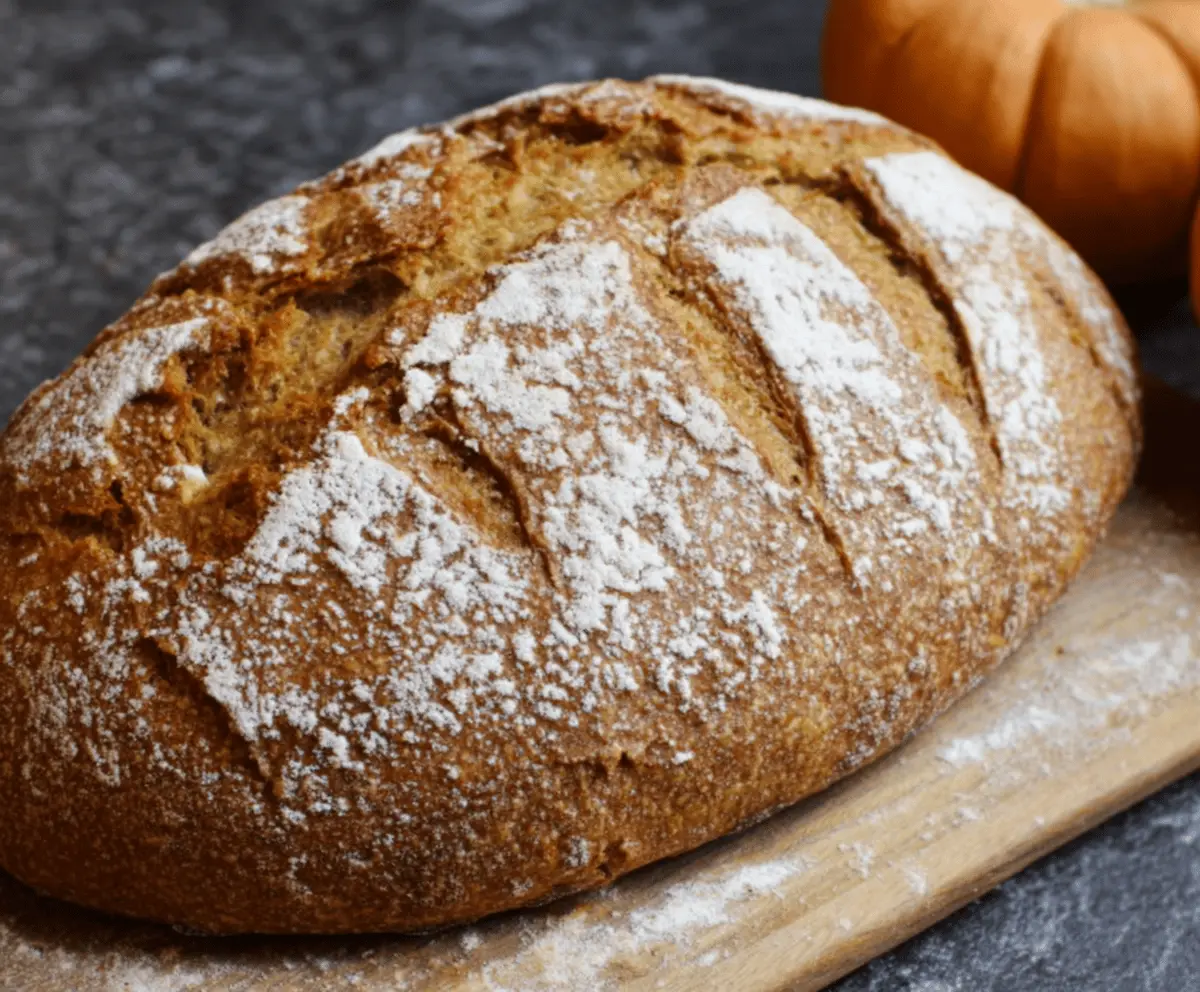
Pumpkin Sourdough Bread
Pumpkin Sourdough Bread is a cozy, flavorful loaf that brings the best of autumn right to your table. It’s got that great tangy sourdough chew with a hint of pumpkin…
Tip: save now, cook later.Pumpkin Sourdough Bread is a cozy, flavorful loaf that brings the best of autumn right to your table. It’s got that great tangy sourdough chew with a hint of pumpkin sweetness, making it perfect for the season. The soft, tender crumb with a slightly crisp crust makes every bite really special.
I love baking this bread when the weather starts to cool down—it fills the kitchen with the warm smell of pumpkin and spices. The natural sourdough starter gives the bread a nice depth that you just don’t get with regular yeast breads. I find it’s such a satisfying recipe that feels both a little rustic and a little festive at the same time.
My favorite way to enjoy it is toasted with a pat of butter or a smear of cream cheese. It’s great for breakfast, snacks, or even alongside dinner. If you’re making it yourself, don’t rush the rising—letting the dough develop slowly really brings out the flavor and texture. This pumpkin sourdough has quickly become a fall staple that I look forward to baking every year.

Key Ingredients & Substitutions
Bread Flour & Whole Wheat Flour: Bread flour gives your loaf a great structure and chew. Whole wheat adds nuttiness and a bit of density. If you don’t have whole wheat, you can swap it for spelt or rye flour for a different flavor.
Pumpkin Puree: Use cooked, mashed pumpkin (not canned pie filling). You can also substitute with squash puree or sweet potato for similar texture and flavor.
Sourdough Starter: This is key for flavor and rising. Make sure your starter is active and bubbly. If you don’t have one, try using a commercial yeast, but the flavor won’t be quite the same.
Spices & Sweeteners: Cinnamon and nutmeg add warmth, but you can leave them out or add other warm spices like ginger or cloves. Honey or maple syrup is optional but helps balance the tanginess.
How Do You Get a Good Rise and Texture in Pumpkin Sourdough Bread?
Getting the right rise when you add pumpkin (which is wet and heavy) needs some care:
- Make sure your sourdough starter is strong and active before mixing.
- Do stretch and folds in the first 2 hours of bulk fermentation to build gluten strength.
- A longer, slower final proof (like a fridge overnight) helps develop flavor and improves texture.
- Preheat your oven and Dutch oven or baking stone well to get a nice oven spring.
- Score the dough just before baking so it can expand without cracking.
- Let the bread cool completely; cutting it too soon can make it gummy inside.
Equipment You’ll Need
- Dutch oven – keeps steam inside for a perfect crust and even baking.
- Mixing bowls – you’ll need a big one for mixing and another for wet ingredients.
- Bench scraper – helps you handle sticky dough without making a mess.
- Proofing basket or bowl with a floured tea towel – supports the dough shape during the final rise.
- Bread lame or sharp knife – for scoring the dough so it can expand properly in the oven.
- Cooling rack – lets your bread cool evenly without sogginess.
Flavor Variations & Add-Ins
- Add chopped walnuts or pecans for a nice crunch and nutty flavor that pairs well with pumpkin.
- Mix in dried cranberries or raisins for a touch of sweetness and chewy texture.
- Swap cinnamon and nutmeg for pumpkin pie spice or ginger for a different warm spice profile.
- Stir in a tablespoon of brown sugar or molasses to deepen the sweetness and color of the crust.

How to Make Pumpkin Sourdough Bread
Ingredients You’ll Need:
- 350 g (2 3/4 cups) bread flour, plus extra for dusting
- 150 g (1 cup) whole wheat flour
- 250 g (1 cup) pumpkin puree (cooked and mashed pumpkin)
- 300 g (1 1/4 cups) active sourdough starter (100% hydration)
- 250 ml (1 cup) lukewarm water
- 10 g (2 tsp) salt
- 1 tsp ground cinnamon (optional)
- 1/2 tsp ground nutmeg (optional)
- 1 tbsp honey or maple syrup (optional)
How Much Time Will You Need?
This bread takes some time to develop flavor with about 4-6 hours of bulk fermentation plus 2-4 hours of proofing. You can also refrigerate overnight for a slower rise. Baking time is about 40-45 minutes, and cooling should be at least 1 hour before slicing.
Step-by-Step Instructions:
1. Mixing the Dough:
In a large bowl, mix bread flour, whole wheat flour, salt, and spices if using. In another bowl, combine pumpkin puree, sourdough starter, lukewarm water, and honey or maple syrup. Pour the wet ingredients into the dry mix and stir until combined.
Knead by hand for 8-10 minutes or use a stand mixer with a dough hook for about 5 minutes until the dough feels smooth and elastic.
2. Bulk Fermentation:
Cover your bowl tightly with a damp towel or plastic wrap and let the dough ferment at room temperature for 4-6 hours. Every 30 minutes during the first 2 hours, do a stretch and fold to strengthen the dough.
3. Shaping and Proofing:
Turn your dough onto a floured surface and shape it into a tight round or oval. Place it seam-side up into a floured proofing basket or a bowl lined with a floured tea towel. Cover it and let proof at room temperature for 2-4 hours, or place it in the fridge overnight for slower fermentation and deeper flavor.
4. Baking:
Preheat your oven to 230°C (450°F) with a Dutch oven or baking stone inside for at least 30 minutes. Gently tip your dough onto parchment if using a Dutch oven, or directly onto the baking stone. Score the top with a sharp knife or lame.
Bake covered for 20 minutes, then remove the lid and bake for another 20-25 minutes until the crust is golden brown and crisp.
5. Cooling:
Let the bread cool completely on a wire rack—this helps the inside finish cooking and sets the crumb.
Enjoy your pumpkin sourdough bread toasted with butter or cream cheese, perfect for autumn mornings or snacks!

Can I Use Canned Pumpkin Puree Instead of Fresh Pumpkin?
Yes, you can use canned pumpkin puree, just make sure it’s plain pumpkin and not pumpkin pie filling. Stir it well before measuring to ensure consistent texture.
How Do I Know If My Sourdough Starter Is Ready to Use?
Look for a bubbly, active starter that doubles in size within 4-6 hours of feeding. It should have a pleasant, slightly tangy aroma. If it’s sluggish, feed it a few more times before baking.
Can I Freeze Pumpkin Sourdough Bread?
Absolutely! Slice the cooled bread and freeze it in an airtight bag or container. Toast or thaw slices as needed for best freshness and taste.
What If My Dough Is Too Sticky to Handle?
That’s normal with pumpkin added. Lightly flour your hands and work surface, but avoid adding too much flour or the bread might become dense. Using a bench scraper can help manage sticky dough during shaping.
